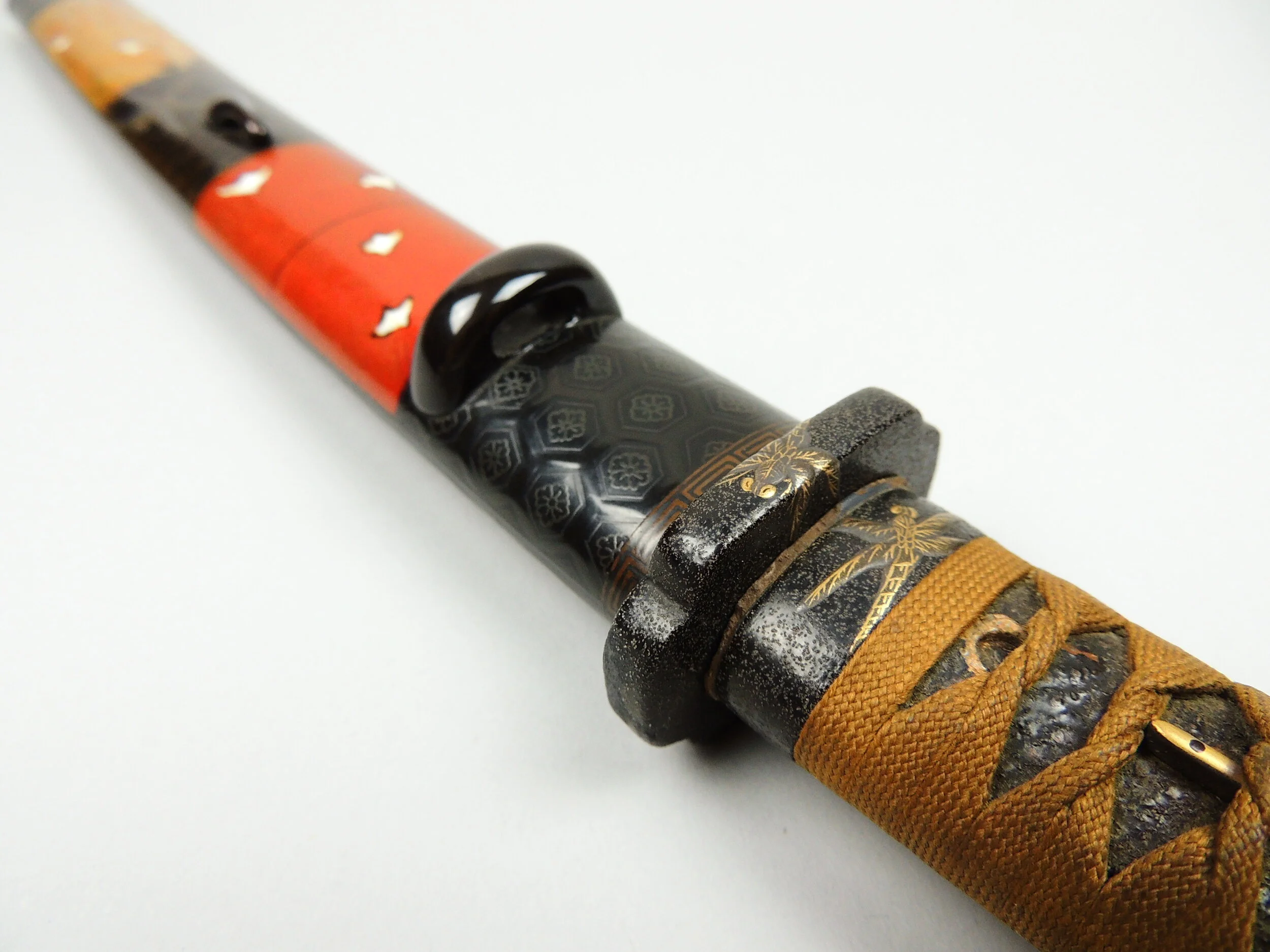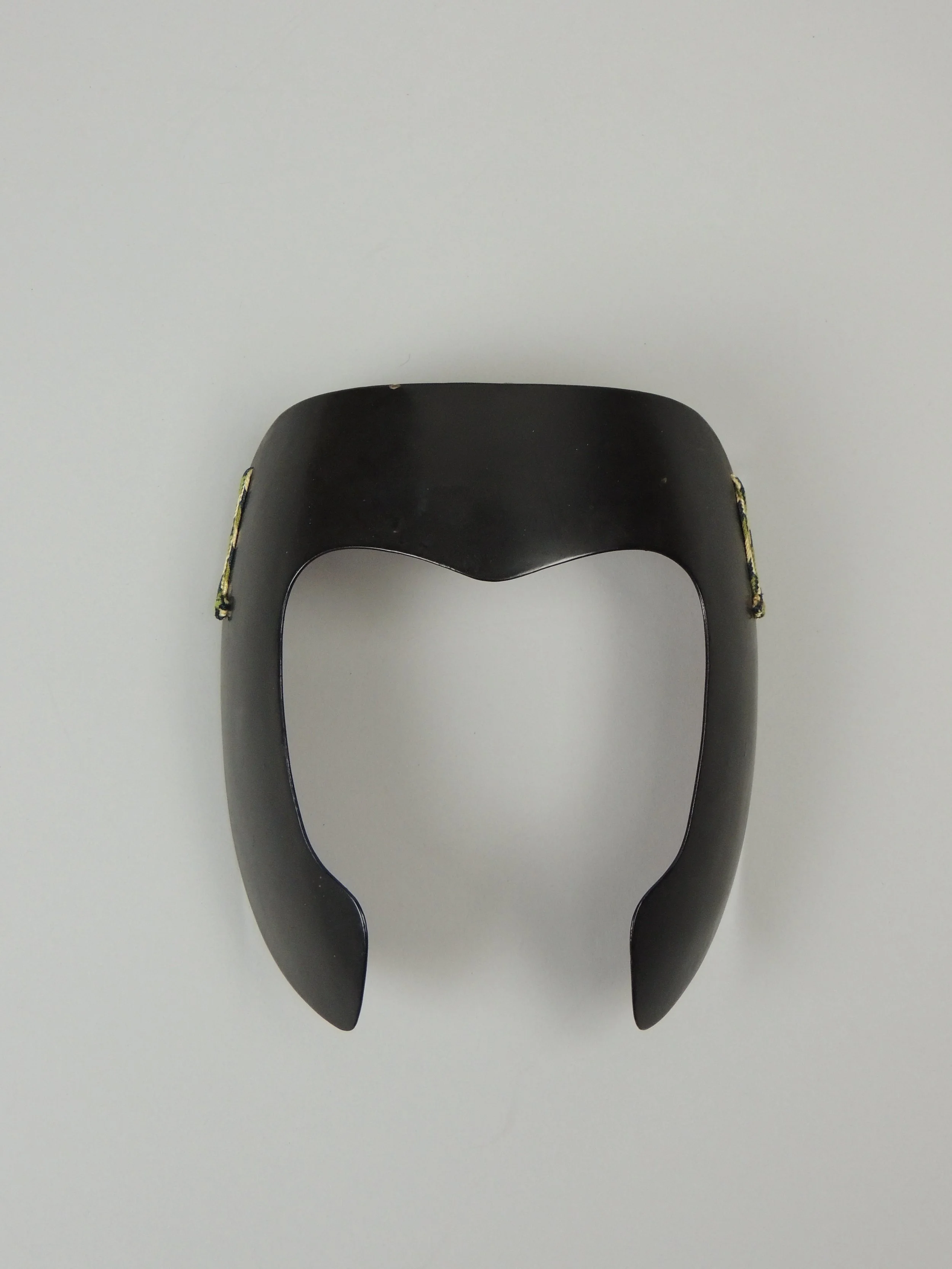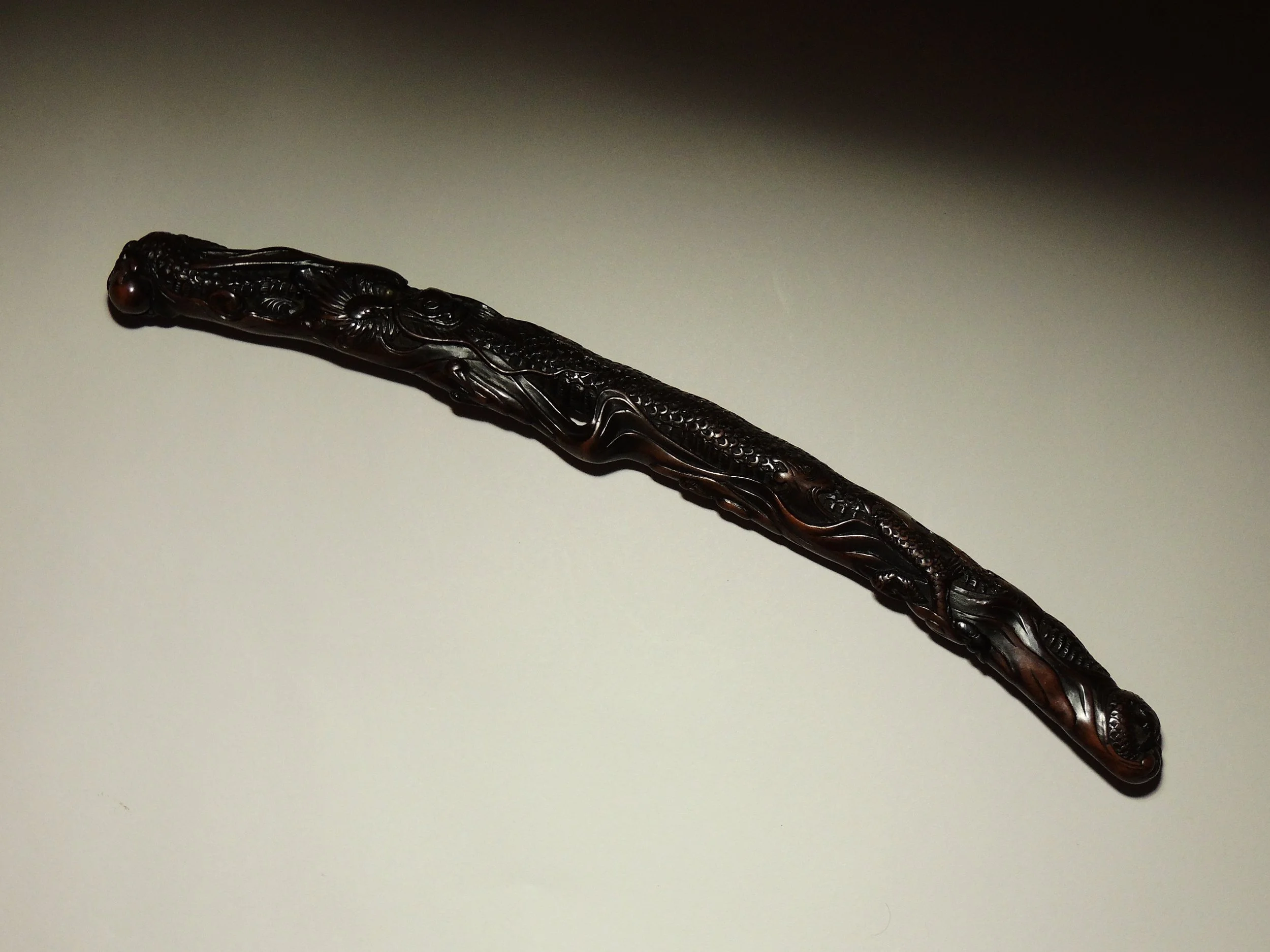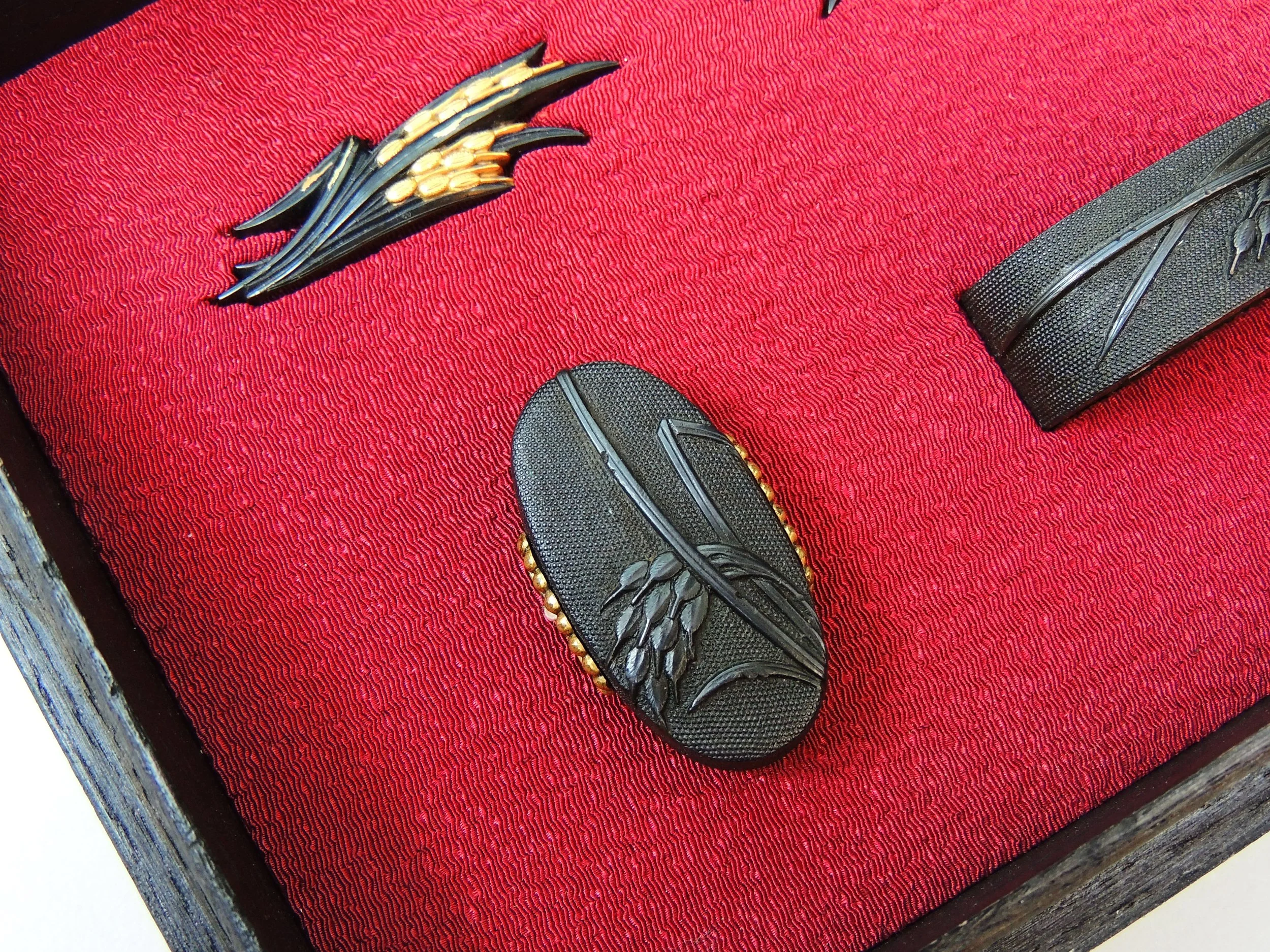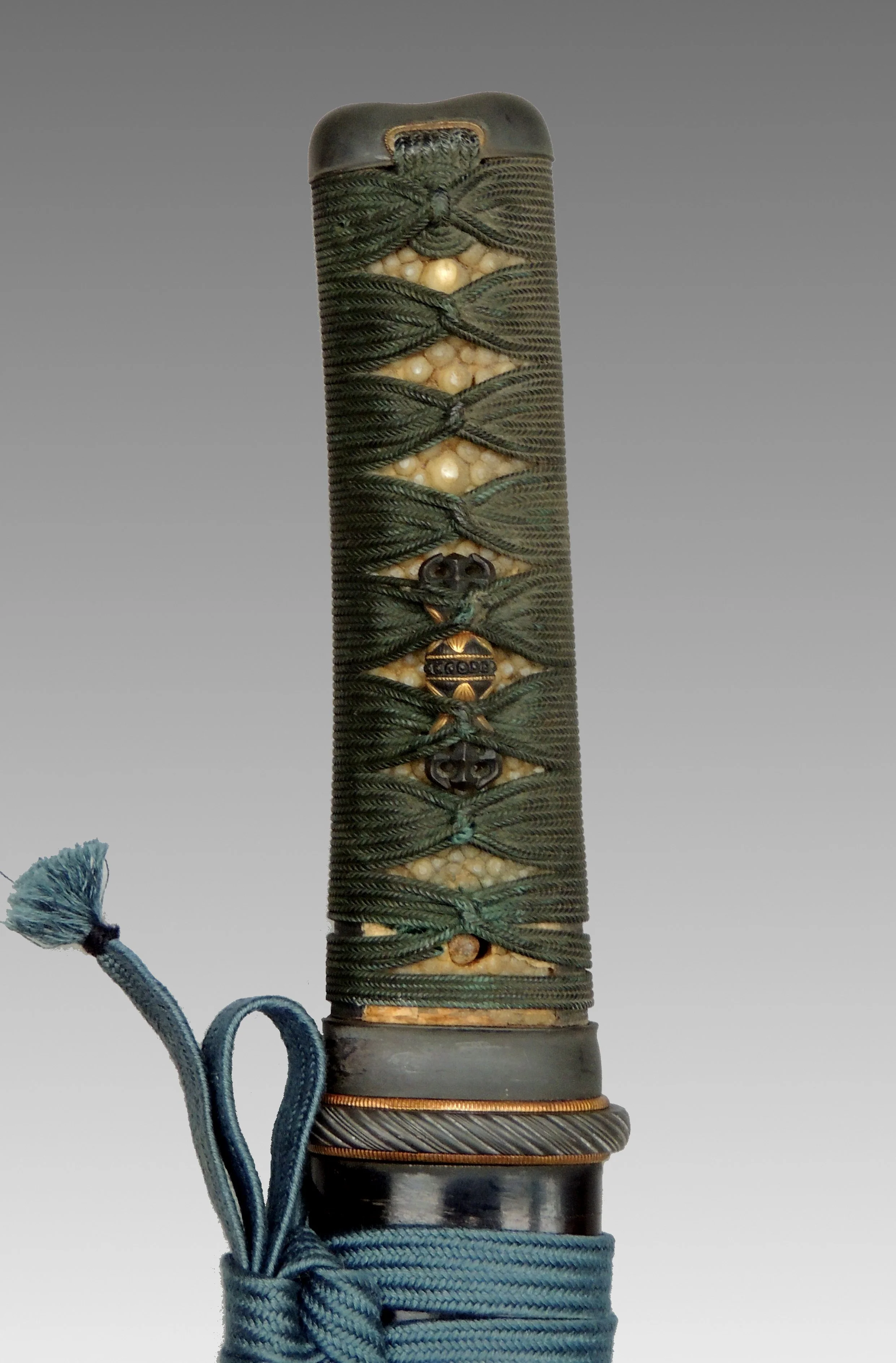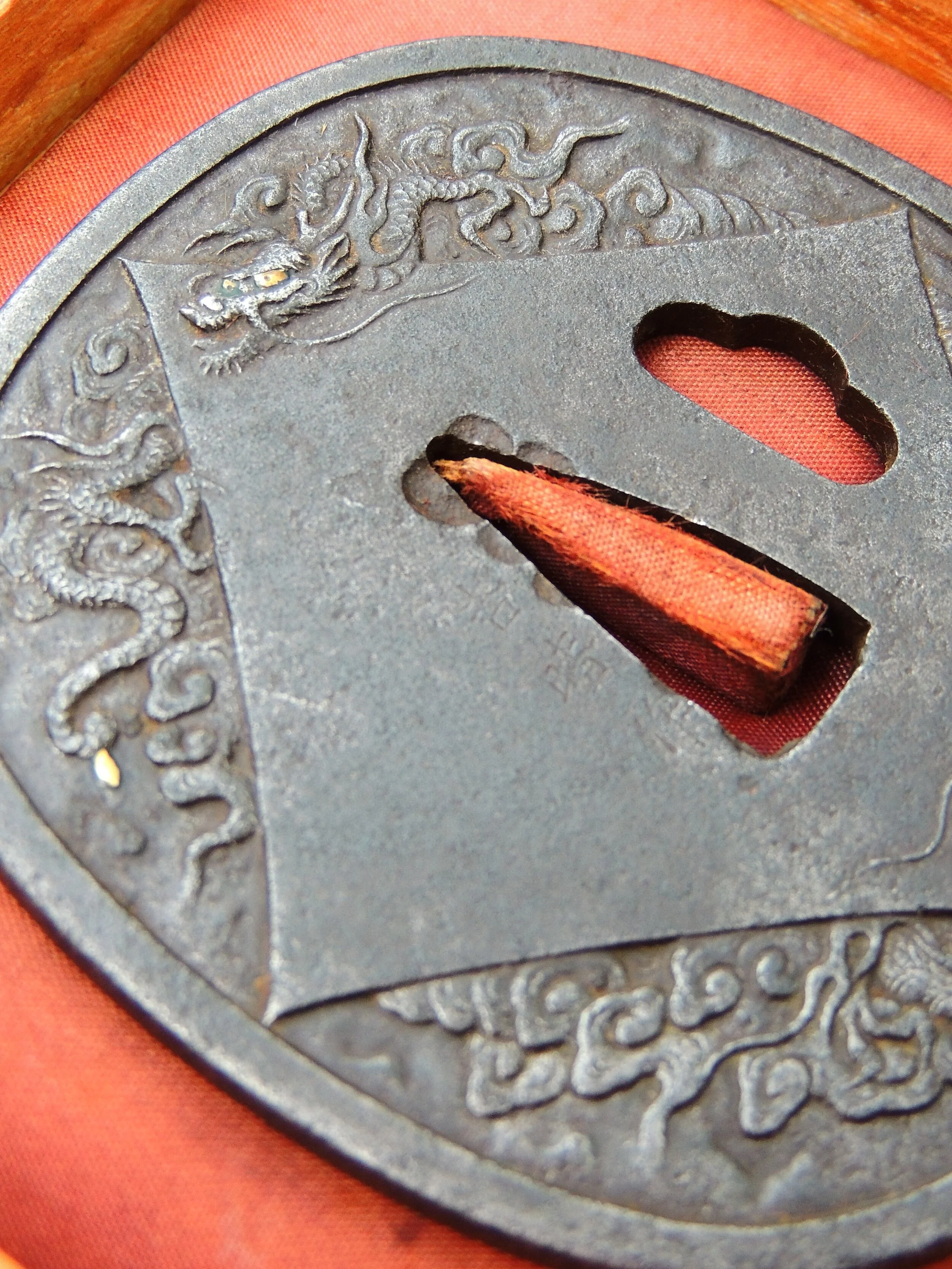Edo period, 17/19th century
1615-1868
Wakizashi
A 17th century Edo period osuriage wakizashi, saya in a roiro ground with intense agoai nashiji makie with seed pod decoration. An iron sukashi tsuba with shakudo and gold fuchi and kashira in floral and insect design that is almost certainly made by Mino Ju Mitsunaka. Mitsunaka’s family name was Watanabe and his name was Shinkichi who was the second son of the 2nd generation Nitsutoki. He was born at Bunsei 13th (1830) and passed away at Meiji 22nd (1889) He lived at Syonai and made grasses, followers, and also insects. A gilt menuki on ray skin with green and black silk braid handle.
Unsigned
555mm x 60mm
Kogatana
Edo period 18/19th century
1753-1805
A kogotana signed by Ozaki Gengoemon Suketaka. He was of the Osaka tosho and was the pupil of Korada Takanobu. He worked in later shinto and the early part of shinshinto. Suketaka died in Bunka ni nen (1805) at the age of 53. The kozuka is of copper and gilt lotus design. Edo period c1790.
Signed Ozaki Gengo’emon Suketaka
213mm x 14mm




